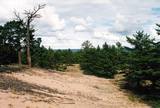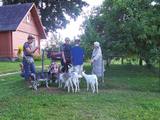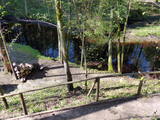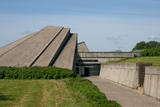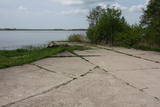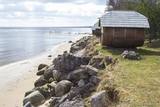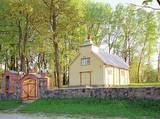| Нo | Название | Описание |
|---|---|---|
|
Ceļa, kas ved uz jūru – galā, redzami Latvijas piekrastei samērā reti skati. Ja palaimējas, šeit var novērot vietējos zvejniekus darbībā, kas joprojām iet zvejā. Krasta kāpās aplūkojamas vecas, pamestas un arī sagrieztas zvejas liellaivas un dažādi mūsdienu zvejniecībā izmantojami „darba rīki”. |
||
|
Vienīgā baznīca nacionālā parka teritorijā. Tā atrodas Kirblas (Kirbla) ciemā – uz neliela pacēluma, kas Baltijas ledus ezera laikā bijusi sala, kuru no visām pusēm ietvēris ūdens. Kirblas baznīcas pirmsākumi ir meklējami 16. gs. un par tās celtniecību saglabājušies dažādi interesanti nostāsti. Tas ir viens no mazākajiem Igaunijas dievnamiem (29 x 11 m). |
||
|
This is a forested island in the Bay of Finland which is the 6th largest Estonian island and is found 14 km to the N of Tallinn. Two decades ago it was a closed zone, because the Soviet Union had a highly secretive manufacturing plant for maritime mines here.
|
||
|
Здесь установлен памятный камень К. Валдемару, говорящий о его заслугах на благо создания и развития Латвийского государства. На этом месте когда-то находилась Ройская или Лубэзерская мореходная школа, рядом с которой находился учительский дом, сохранившийся до наших дней. Сейчас здесь расположена Ройская частная практика семейных врачей. Мореходная школа просуществовала с 1873-го по 1915-й годы, но во время Первой мировой войны она была разрушена. Мореходная школа готовила штурманов каботажного плавания. Здесь можно было учиться бесплатно и учебный материал освоить на латышском языке. Латышские моряки были известны в России и за границей, даже на американском континенте. Их уважали за знание дела, добропорядочность и преданность. (Источник: Ройский ТИЦ) |
||
|
Усадьба „Межмала”. Хозяева усадьбы собрали интересную
коллекцию старинных предметов быта и труда 19 – 20 веков.
У посетителей есть возможность самим испытать чудо плетения
корзин из лучины. Приобретение корзин, травяных чаев.
Энергетическая тропа леса.
Время работы: по договоренности |
||
|
Кафе находится на третьем этаже торгового центра «Талсинский центр». К услугам посетителей бесплатный WIFI, беспроводной Интернет. Количество мест – 50. Время работы: пн. – вс. 9:00 - 21:00. |
||
|
Atrodas Tērvetes ziemeļrietumu daļā, Tērvetes upītes krasta līkumā. „Sprīdīšos” sava mūža pēdējo desmitgadi (no 1922. līdz 1933. g.) strādāja un atpūtās latviešu rakstniece Anna Brigadere (1861. - 1933). Šajā laikā top lugas, stāsti, dzejoļi un rakstnieces atmiņu triloģija. No laukakmeņiem celtā „Sprīdīšu” ēka uzbūvēta 1840 g. Te sākotnēji darbojušās ūdensdzirnavas, tad skola, dzīvojuši mežziņi. Tagad šeit aplūkojams rakstnieces memoriālais muzejs. No „Sprīdīšiem” var uzsākt garāku pastaigu pa Tērvetes dabas parku, kur izvietoti no koka darinātie A. Brigaderes pasaku varoņi. |
||
|
Кафе «Апсите» находится в центре поселка около магазина «Топ». Латышская кухня: Картофельные блины с окороком, серый горох с салом, скландрауши. Особое блюдо: Горшочек «Апсите». |
||
|
Находится на обочине автодороги А9 в полукилометре от поворота на Лестене в направлении Риги. Камень (автор O. Фелдберг) установлен в 1991 году (на месте бывшего дома „Румбу”) в память о защитниках Курземской крепости, которые, выдержав десятикратное превосходство советской армии, дали возможность ~ 300 000 латвийским военным беженцам эмигрировать от следовавшего за этим советского террора. |
||
|
Pie Gārsenes pils atrodas bijušais muižas parks 4ha platībā un pie tā sākas arī Gārsenes dabas takas. Dabas takas vēsturiski tika veidotas vienlaicīgi ar pils kompleksa būvniecību un ieeja takās atrodama pie mākslīgi veidotā, ar bruģa pamatni izliktā barona peldēšanās dīķa. Takas sākumā saglabājusies ošu aleja, ko savulaik stādījis barona dārznieks, savukārt taku vidusposmā apmeklētājiem ir iespēja pasēdēt uz Barona krēsla - akmens ar cilvēku veidotu sēdvietu tajā. Kopumā Gārsenes mežā vijas dažāda garuma labiekārtotas pastaigu un izziņas takas - Kultūrvēsturiskā taka, Zaļā taka, Baronu pastaigu taka, Staburaga taka, ar ierīkotām atpūtas un ugunskuru vietām. Takās apskatāmi vairāk kā 40 unikāli dabas objekti, gan dižakmeņi, gan dižkoki, kā arī un pagasta ievērojamākie arhitektūras un kultūrvēstures pieminekļi. No 2016.gada maija Dabas takās ietilpst arī „Krēslas stundas taka”, kas īpaši patiks zinātkāriem mazajiem ceļotājiem. Taka stāsta par Rūķu dzīvi mežā un tās veidošanas pamatā ir stāsti no „Lielās Rūķu enciklopēdijas”. |
||
|
Хозяйство занимается разведением чистопородного и гибридного крупного рогатого скота на племя, откорм и мясо, продажей молочных поросят и производством свинины, выращиванием зерновых и пищевого картофеля, а также пчеловодством. Хозяева уже несколько лет в шести прудах хозяйства разводят карпов, линей и орф. В зимний сезон рыбу можно ловить в специальных бассейнах, которые были созданы, затопив излучину русла реки Берзене. Крестьянское хозяйство «Валти» своим посетителям предлагает обучение по вопросам ведения биологического хозяйства, разведения крупного рогатого скота мясной породы, в том числе генетической работы по поддержанию чистоты породы и рыбалку на свежем воздухе. Для семинаров и учебы в помещении, где разводят рыб, был обустроен специальный зал для семинаров и кухня. В территории хозяйства находится и содержится тропа Оскара Калпака, которая пересекает территорию, интересную с геологической и ландшафтной точки зрения. |
||
|
Маяк Ристна располагается на севере мыса Ристна. Маяк заказали в 1874-ом г. во Франции и изготовили в 1874-ом г. У его подножия располагается небольшое кафе. |
||
|
Ein am Ende des 19. Jh. gebautes Teil der Festung. Ein Museum, das Verbrechen totalitäre Regimes gegen Menschlichkeit wiederspiegelt. |
||
|
The hydroplane airfield is on the eastern shore of Lake Durbe, not far from Līguti. It was built between 1939 and 1941. During the Soviet era, the 43rd aviation escadrille was located here, and it had 13 MBR-2 hydroplanes. All that’s left today are the cement sheets on the shore of the lake. You can look at the site itself.
|
||
|
Познавательная тропа длиной 1,2 км знакомит с многовековыми, занесенными песком соснами. У тропы – в конце бывшего «тира» (полигон Советской Армии) - построена смотровая башня. |
||
|
Старинный ливский поселок, ливское название которого Mustanumm. Еще в середине 20-го века здесь жили ливы. В поселке Мелнсилс у впадения речки Бакупите в Рижский залив представители семейств Ландманисов, Морицов и Отомеров построили три парусника. В поселке находятся два культурно-исторических места: церковная гора Бакю – древнее культовое место и городище пирата Троммеля. (Источник: Ройский ТИЦ) |
||
|
Tillu ‒ это домашнее кафе, которое расположено в Пылве, в магазинчике крестьянского хозяйства. Здесь царят слегка эклектичные богемные настроения, но вместе с тем это теплое и уютное место. Каждый день здесь пекут булочки и пирожки, поэтому в воздухе всегда витают приятные ароматы. |
||
|
Зосненский Римско-католический костёл Св. Евангелиста
Микеля построен в 1800 году на народные пожертвования. Это
деревянное строение на каменном фундаменте, обшито досками.
На фасаде – небольшая башенка, восстановленная в 1994 году
|
||
|
Very expressive form of relief with wide look over the neighborhood. On its peak there's ruins of the castle of bishop Hermanis which was built in 1224. The world's oldest firearm was found here. |
||
|
Ремесленник работает в технике окуренной (черной) керамики. Приглашает посетителей на открытие печи, в творческие мастерские, предлагает заказать и купить керамические изделия. |
||


